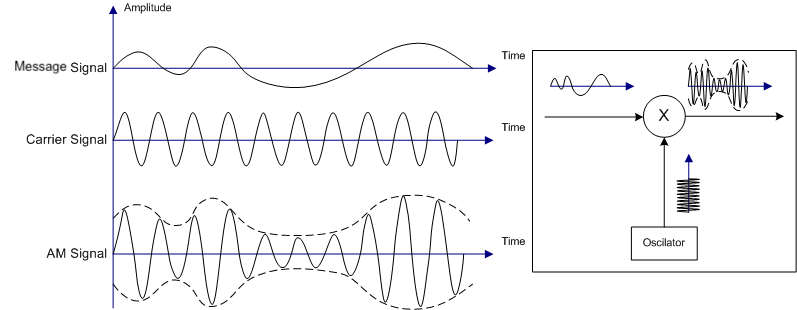Basic Principles
Modulation
The basic method of amplitude modulation primarily relies on changing the amplitude of the carrier signal according to the intensity of the signal, to match the changes in the input signal, while keeping the frequency and phase of the carrier constant.

Let the carrier be , and the signal be , then the AM modulated signal can be written as
Generally, we adjust the maximum amplitude of the signal to be less than , so that the envelope of the modulated signal does not pass through zero, making the demodulation of the AM signal relatively simpler.
Assuming the spectrum of the signal is shown in the figure below:

Then the spectrum after AM modulation is shown in the figure below:

Demodulation
There are many methods to demodulate an AM signal, here we introduce a basic method.
Multiply the AM modulated signal by the carrier again, resulting in:
Low-pass filter the above signal to retain only the low-frequency components, becoming:
Here, can be considered a DC component, which can then be filtered out, and then multiplied by 2, thus obtaining the original signal.
Exercise 2
- In AM modulation, there is something called the modulation index. Please find its definition. Assuming in the above, the maximum amplitude of the signal is , what is the modulation index?
- Please explain why the spectrum after AM modulation is shown in the figure as it is?
- What is the spectrum of the signal after multiplying the AM modulated signal by the carrier again?
